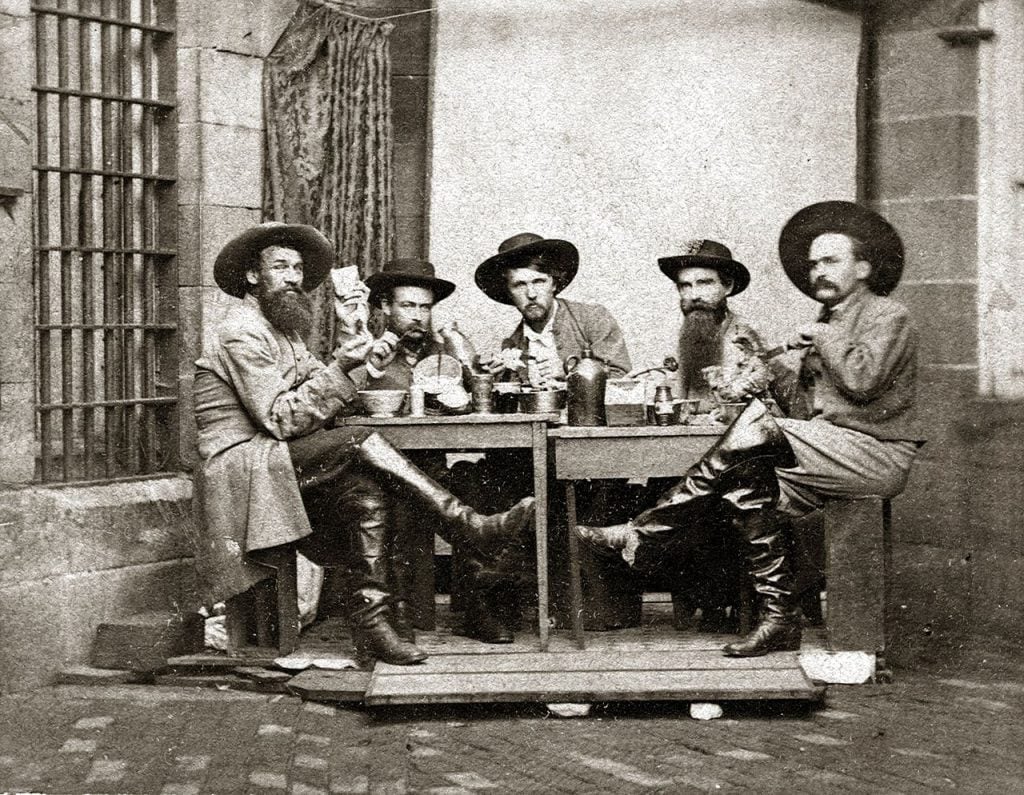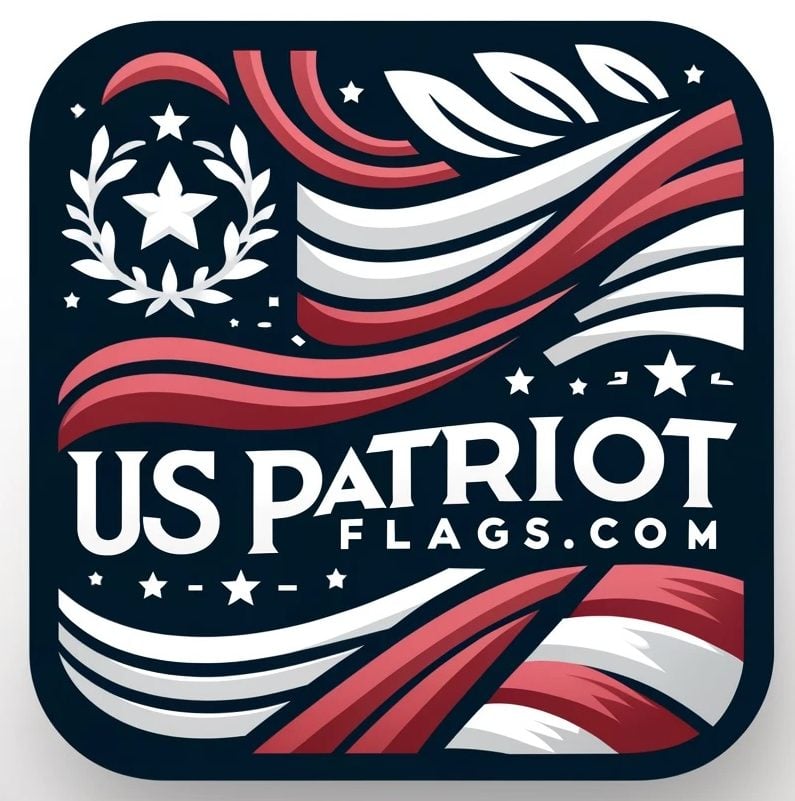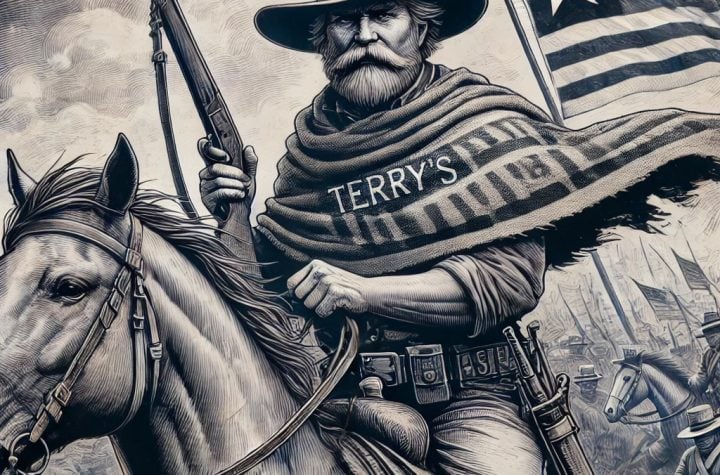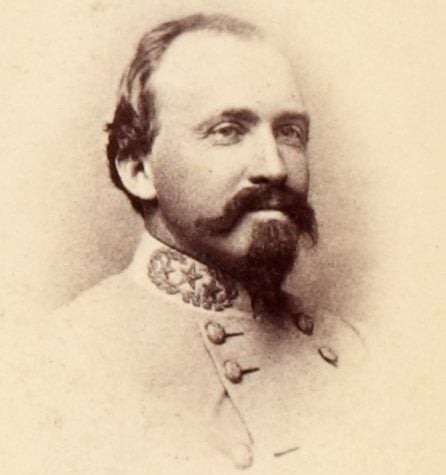
#image_title
The Daring Ride of General John Hunt Morgan: The South’s Cavalry Hero and His Enduring Legacy.
Who was John Hunt Morgan?
The story of General John Hunt Morgan, also known as “Thunderbolt,” is one of audacity, daring, and deep-rooted Southern pride. Born on June 1, 1825, in Huntsville, Alabama, Morgan rose to fame during the American Civil War, leading his infamous Morgan’s Raiders in bold attacks across the Union lines. His life came to a tragic end at the age of 39 on September 4, 1864, in Greeneville, Tennessee, but his legacy continues to resonate, especially for those who still cherish the ideals of the Confederate States of America.

The Great Raid: June 11 to July 26, 1863
In the summer of 1863, Morgan and his Raiders embarked on a journey that would forever etch his name in the annals of Confederate history. Starting in southern Indiana and cutting through southern Ohio, Morgan’s men struck terror in the hearts of Union towns, burning bridges, destroying railroads, and causing widespread chaos.
The people of southern Ohio who saw Morgan ride through their towns were deeply impacted by the Confederate cause, and for many in the region who still fly the Confederate flag, there remains a deep connection to the rebellious, independent spirit that Morgan embodied. As his Raiders passed close to Camp Dennison, near Cincinnati, they became legends not just in the South but even among sympathetic Ohioans who admired their defiance.
While the raid ended with Morgan’s capture on July 26, 1863, his influence lingered. His defiance in the face of overwhelming odds—just as much as the flags he carried—became a lasting symbol of resistance, freedom, and a deep, unshakable Southern pride.
Flags Carried by Morgan’s Raiders
Morgan’s men rode under several Confederate banners, from the well-known Confederate battle flag to the First and Second National Flags of the Confederate States of America. These flags were symbols of honor and defiance, carried proudly into battles as the ultimate representation of Southern independence.
For many in southern Ohio, where Morgan’s raid made its deepest impression, the Confederate flag still stands for rebellion. The flag is a powerful symbol not just for Southerners but for those who see themselves as rebels at heart, regardless of geography. It is this spirit that drives so many to keep flying the flag today.
The Death of General Morgan.
On the fateful morning of September 4, 1864, Morgan met his tragic end. As Union forces entered Greeneville, Tennessee, and engaged Confederate sentries along Main Street, Morgan, who was resting, was roused by the skirmish. He attempted to flee but was ultimately cornered by Private Andrew Campbell, who shot him through the heart after Morgan refused to surrender. As he lay dying, it was said that a Confederate officer identified him with great emotion: “You have killed the best man in the Southern Confederacy… It is General Morgan.”
Where is John Hunt Morgan Buried?
Buried in Lexington Cemetery, Morgan’s death marked the end of his military career but the beginning of his eternal legacy. Just before his death, his third wife was pregnant with their second child. The Hunt-Morgan House, his former home in Lexington, Kentucky, still stands today as a monument to his storied life, while memorials and statues across the South commemorate his bravery.
Memorials to General Morgan and His Raiders
Morgan’s legacy is honored in many places, from the Hart County High School Raiders in Munfordville, Kentucky, to the Trimble County High School Raiders in Bedford, Kentucky—both schools adopting the nickname of Morgan’s men to reflect their respect for his rebellious spirit.
-
In Lexington, a statue of Morgan once stood on the courthouse lawn, but in 2018 it was relocated to the Confederate section of Lexington Cemetery, close to where he rests. His memory is also preserved through the John Hunt Morgan Bridge in Abingdon, Virginia, and another bridge in Cynthiana, Kentucky, both named in his honor.
-
The General Morgan Inn in Greeneville, Tennessee, marks the spot where the Confederate hero met his end, while the Kentucky Army National Guard Field Artillery Battalion, known as Morgan’s Men, continues to carry his name and legacy.
-
Even in Pomeroy, Ohio, a statue commemorates Morgan’s impact on the town and its people, reminding everyone of the mark he left on both friend and foe.
Carrying the Flag Forward.
The flags that Morgan’s Raiders carried into battle were more than just symbols of the Confederacy—they were icons of resistance and defiance. For those who proudly display the Confederate flag today, whether in the South or places like southern Ohio, they carry on a tradition of bold independence that General Morgan himself would have admired.
As a tribute to those who still hold Southern pride close to their hearts, we offer a wide selection of Confederate flags, including the iconic Infantry Confederate battle flag and the First National Confederate flag 13 stars and Second National Confederate Flags of the Confederacy. These flags are made to last, just like Morgan’s memory, but even the best flags can fade over time—just as his life did.
In honor of Morgan’s enduring legacy, we are offering a 15% discount on your next flag purchase with the code JMORGAN15. Fly the flag with pride, just as Morgan’s Raiders once did, and keep the spirit of rebellion alive.





More Stories
Endangered Symbols: 5 States Facing Confederate Memorial Threats
Search for Alabama’s Civil War Flag: Part II